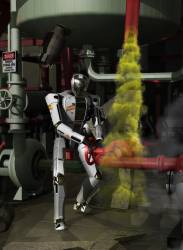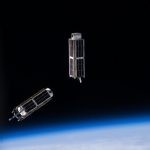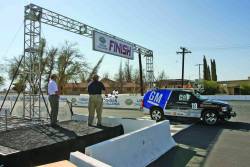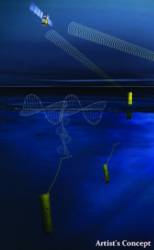 DARPA example of a robot working in a dangerous area
DARPA example of a robot working in a dangerous areaWe certainly hope the competitors in DARPA’s Robotics Challenge hardwire Isaac Asimov’s First Law of Robotics into their creations—the one that says don’t harm humans.
Because the U.S. Defense Advanced Research Projects Agency’s new contest aims to develop technology that advances robotics to the next level. The level at which robots can do what we do, go where we can’t, and change shape as necessary.
We certainly hope the competitors in DARPA’s Robotics Challenge hardwire Isaac Asimov’s First Law of Robotics into their creations—the one that says don’t harm humans.
Because the U.S. Defense Advanced Research Projects Agency’s new contest aims to develop technology that advances robotics to the next level. The level at which robots can do what we do, go where we can’t, and change shape as necessary.
Although the emphasis placed on navigation will not be as great as previous DARPA competitions — the Grand Challenges of 2004 and 2005, the Urban Challenge of 2007, and the Network Challenge of 2009 — the robotics competition will challenge system designers to create machines that can master a series of complex task scenarios or "events." The challenge sponsors are looking for machines that can use hand and power tools, drive vehicles, climb ladders, close valves, replace broken parts, clear debris and move freely with dexterity, strength and endurance through a messy and confusing disaster site.
They seek autonomous or tethered robots that can work with everyday humans: non-expert supervisors using wireless communication links that may be less than robust.
DARPA announced the contest on April 10, with a request for hardware, software, modeling and gaming developers to compete for a grand prize of US$2 million out of a prize pool of up to US$34 million.
The idea is to design the software and hardware for human surrogates in disaster zones that are unsafe or inaccessible. DARPA uses the example of Japan’s Fukushima Daiichi nuclear power plant, still lethal after last year’s meltdowns, hydrogen explosions and radioactive materials release.
Proposals are due by May 31 2012. Prospective contestants will hear from DARPA right after their proposals are evaluated, which will take varying amounts of time depending on the type and complexity of the proposal.
The successful teams will be tested in three phases, beginning in October 2012 and ending around December 2014 with the announcement of the grand prize winner.
The robots will be tested in a virtual disaster challenge and two disaster response challenges doing tasks they would be expected to face in a real-world disaster.
Competitors without hardware or the expertise to create it may be given a 300 lb (150 kg) "body" to use that includes arms, hands with two or three fingers, jointed legs, torso and head. In the tradition of cinematic robot names, it will have a cold bureaucratic designation: GFE Platform (for Government Furnished Equipment.)
Depending on the project, contestants may be able to use a virtual test environment, described as "open source, real-time, operator-interactive . . . populated with models of robots, robot components and field environments" and named, predictably, the GFE Simulator. It will be designed by Open Source Robotics Foundation, Inc.
Generous development funding, cloud computing resources and other support is available for successful proposals, but competitors may pay their own way as well.
The contest is aimed at those doing "basic and fundamental" research that can be shared broadly in the scientific and engineering community. Collaboration is encouraged.
The competition solicitation number is DARPA-BAA-12-39. Find out more at the DARPA website or contact Christopher Glista at DARPA-BAA-12-39@darpa.mil.





